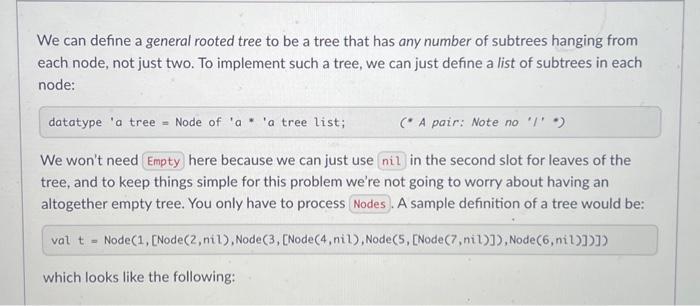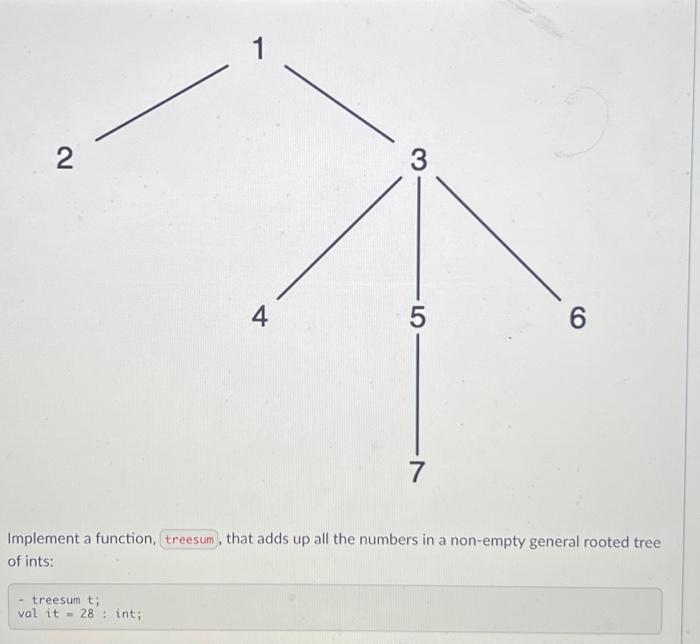Answered step by step
Verified Expert Solution
Question
1 Approved Answer
We can define a general rooted tree to be a tree that has any number of subtrees hanging from each node, not just two.


We can define a general rooted tree to be a tree that has any number of subtrees hanging from each node, not just two. To implement such a tree, we can just define a list of subtrees in each node: datatype 'a tree= Node of 'a 'a tree list; (A pair: Note no 'I' *) We won't need Empty here because we can just use nil) in the second slot for leaves of the tree, and to keep things simple for this problem we're not going to worry about having an altogether empty tree. You only have to process Nodes. A sample definition of a tree would be: Node(1, [Node(2, nil), Node(3, [Node(4, nil), Node(5, [Node(7,nil)]), Node (6,nil)])]) val t- which looks like the following: 2 - 1 treesum t; val it 28: int; 4 3 5 7 6 Implement a function, treesum, that adds up all the numbers in a non-empty general rooted tree of ints:
Step by Step Solution
★★★★★
3.53 Rating (153 Votes )
There are 3 Steps involved in it
Step: 1
The following is a pseudocode implementation of the treesum function def treesumnode ...
Get Instant Access to Expert-Tailored Solutions
See step-by-step solutions with expert insights and AI powered tools for academic success
Step: 2

Step: 3

Ace Your Homework with AI
Get the answers you need in no time with our AI-driven, step-by-step assistance
Get Started


